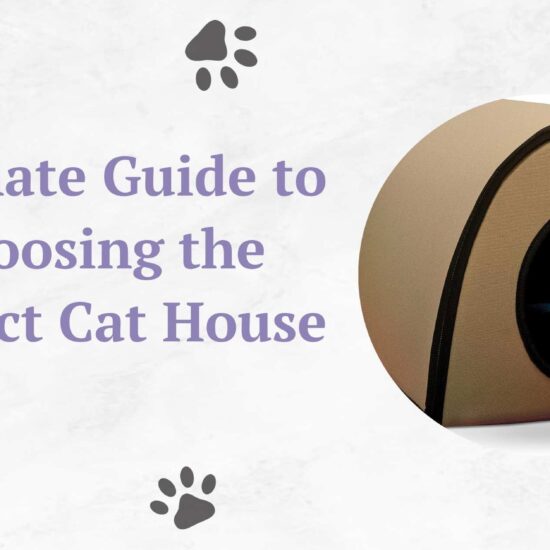The role of cat breeds in therapy is pretty evident from the fact that this is not a modern thing, many people have historically had a soft spot in their hearts for cats and sought comfort with cats during tough times. However, several cat breeds have demonstrated special attributes that make them suitable for therapy tasks in addition to their functions as gorgeous and entertaining pets.
Table of Contents
We will dig deeper into the role of cat breeds in therapy, looking at their special qualities, the benefits of therapy cats, and the best therapy cat breeds that are excellent in these capacities. We will also look at the processes required to assure their proper training and certification.
Understanding Therapy Cats
People who are struggling with their mental health can benefit greatly from the comfort and emotional support that therapy cats can offer. The benefits of therapy cats are tremendous, they provide therapeutic support through their presence, affection, and innate understanding. These feline friends give people a sense of security, lessen their loneliness, and have a calming effect.
Medical practitioners are better aware of the enormous benefits of therapy cats on people’s mental and emotional health when they recommend emotional support cats as a component of an all-encompassing therapy strategy. In reality, under legislation like the Fair Housing Act and the Air Carrier Access Act, therapy cats are legally protected. Even where there are pet prohibitions, these rules let people travel by plane with their cats in tow.
It has been demonstrated that the benefits of therapy cats are tremendous. According to studies, engaging with cats can lower stress levels and help lower blood pressure. Additionally, the simple act of touching a cat can cause the production of endorphins, the body’s naturally occurring feel-good hormones, which can enhance mood and promote calmness.

Benefits Of Therapy Cats
In a variety of contexts, therapy cats have been acknowledged for their capacity to enhance mental and emotional health. Research has repeatedly shown that encounters with therapy cat breeds are beneficial to people’s general health. These advantages extend to dimensions of well-being that are social, emotional, and physical.
Therapy cats have been shown to improve patient satisfaction with their care overall and to aid patients in managing their pain, anxiety, and depressive symptoms. People’s emotional states are significantly impacted by the presence of these kind and reassuring creatures, which fosters a calming and encouraging environment.
The benefits of therapy cats extend outside of just healthcare facilities. They make nursing home residents happier, offer companionship, and encourage senior citizens to interact socially. It has been noted that the presence of therapy cats reduces residents’ feelings of isolation and loneliness, fosters pleasant feelings, and even encourages seniors to reminisce and relate stories.
In educational contexts, some of the best therapy cat breeds have a surprising impact. Schools may be stressful places for students, and research has shown that having therapy cats around can help kids feel less stressed and anxious. These feline companions make students and teachers feel more emotionally supported and relaxed and improve their general well-being. Therapy cats can also enhance the learning environment by promoting a supportive and encouraging environment.

Characteristics of Therapy Cat Breeds
Some breeds of cats with particular characteristics make them especially well-suited for therapy jobs. These breeds demonstrate characteristics including a placid temperament, sociability, adaptability, and a close relationship with humans. Selecting the best therapy cat breeds requires a thorough understanding of these characteristics.
The Ragdoll is one of the best therapy cat breeds. Ragdolls are renowned for being quiet and gentle, which makes them perfect for giving consolation to people who are upset. A therapeutic environment that can reduce tension and encourage relaxation is created by their fluffy, velvety fur and friendly demeanor.
The Maine Coon is another one known for being one of the best therapy cat breeds. These cats are outgoing and affectionate, and they frequently develop close relationships with their owners and clients. Maine Coons are renowned for being kind and patient, which makes them ideal for therapy tasks, particularly in settings where people may need extra care and attention.
Another cat breed that is well-known for being one of the best therapy cat breeds is the Siamese. They are not only affectionate but also quite intelligent. They can respond to people’s emotional needs and adapt well to various surroundings thanks to their intelligence. Siamese cats are excellent therapeutic companions because they enjoy social interactions and are able to develop strong bonds with people.
Therapy cat breeds can guarantee the most efficient and advantageous results for the people they assist. So choose the best emotional support cats based on your temperament, sociability, and lifestyle preferences.

Training and Certification of Therapy Cat Breeds
In order to make sure that the therapy cat breeds are ready for their tasks, proper training and certification are essential. Training regimens for making them the best emotional support cats emphasize desensitization to diverse stimuli and surroundings as well as socializing and obedience instruction. It is essential for therapy cats to maintain their composure and good manners in a variety of settings so that those they engage with can feel secure and at ease.
During the training, therapy cats learn to feel at ease being handled by diverse personalities, and strangers, and they get used to a variety of equipment, sounds, and smells that are typically present in therapeutic environments. This preparation makes therapy cats more comfortable and assured in their responsibilities, enabling them to offer those in need the care and comfort they require. Thereby turning them into the best emotional support cats.
Reputable emotional support animal groups evaluate candidates as part of the certification process. These assessments guarantee that the cat and the person handling it adhere to the requirements and criteria for therapeutic work.
The certification procedure maintains the professionalism and efficacy of therapy cat programs by acting as a quality control measure. Therapy cat programs can make sure that their emotional support animal is ready and able to deliver the desired therapeutic benefits by adhering to accreditation standards.
The handlers of therapy cats also gain from appropriate training and certification. Handlers are given advice on best practices, such as how to successfully handle and support their therapy cats. This training makes sure that handlers have the abilities and information required to lead productive therapy sessions and turn those cats into the best emotional support cats.
Organizations and individuals can guarantee the highest degree of professionalism, safety, and efficacy in therapy programs employing these magnificent feline companions by giving priority to the training and certification of these emotional support animals.
Training and Certification
- Training Programs: Therapy cats undergo training that focuses on socialization, obedience instruction, and desensitization to various stimuli and environments. This ensures they remain calm and well-mannered in different settings.
- Certification Process: Reputable emotional support animal groups assess therapy cats and their handlers to ensure they meet the standards for therapeutic work. This process acts as a quality control measure.
- Handler Training: Handlers receive guidance on best practices for managing and supporting their therapy cats, ensuring effective and productive therapy sessions.
- Professionalism and Efficacy: Certification maintains the professionalism and efficacy of therapy cat programs, ensuring that therapy cats are well-prepared to provide the desired therapeutic benefits.
Note: There might be affiliate links mentioned here. We may receive a commission if you purchase a product through an affiliate link. There is no additional charge for you. Please do your own research before making any online purchases.
Therapy Cats in Various Environments
The benefits of therapy cats extend to a variety of contexts. They can comfort those in need, reduce their stress levels, and improve their general well-being. Let’s look at a few situations where therapy cats have shown to be especially helpful.
Therapy cats are vital in giving patients emotional support in hospitals and other medical settings. In waiting spaces, these furry friends foster a warm and relaxing ambiance that lessens tension and fosters a feeling of comfort. It has been demonstrated that interacting with therapy cats prior to medical operations can help patients manage stress and lessen feelings of dread and discomfort. Additionally, some of the best emotional support cats provide a type of diversion and amusement that might help patients temporarily forget about their illnesses.

Another environment where therapy cats provide residents with a great deal of happiness and company is nursing homes and assisted living institutions. It has been shown that having therapeutic cats around fosters greater social contact, elevates mood, and lessens feelings of isolation and despair. Residents may feel at ease and have a feeling of purpose when an emotional support animal is around since they are made to feel special and cherished by these cuddly pals.
Therapy cats have proven to be effective at lowering stress and anxiety in learning environments like colleges and universities. Many students find the demands of academics and interpersonal dynamics to be exhausting, but the presence of therapy cats contributes to the development of a calming and encouraging environment. Students’ entire well-being might be improved by interacting with these emotional support animals in addition to their ability to unwind and concentrate better. Therapy cats can be used in a range of programs, including stress-relieving sessions at exam times or as permanent companions in specified areas within the educational institution.
Other places where these emotional support animals have a big impact are rehab facilities and therapy clinics. People going through physical or emotional healing processes can benefit from these animals’ inspiration and emotional support. Therapy cats give people a sense of normalcy and security while also assisting them in regaining their confidence and finding comfort during difficult times. These kind companions’ presence can foster a welcoming and reassuring atmosphere that motivates patients to take an active role in their therapy and recovery.
Overall, the role of cat breeds in therapy has shown to be quite helpful in a variety of contexts, enhancing the mental and emotional health of people of all ages. Therapy cats’ unconditional affection, consolation, and support have a transforming effect on individuals with whom they come into contact.

Protecting Therapy Cats
The welfare of therapy cats must always come first. It is imperative to make sure that these magnificent animals receive the care, consideration, and surroundings necessary for their own health and happiness since they devote themselves to offering consolation and assistance to people in need.
The physical well-being of therapy cats must be maintained with routine veterinarian treatment. This covers shots, physicals, preventative care, and rapid attention to any illness or discomfort symptoms. Regular veterinary checkups aid in the early detection of any health problems, enabling prompt interventions and the right kind of care.
The dietary requirements of therapy cats must be met in addition to their physical well-being by giving them a balanced and suitable diet. They benefit from a balanced diet that meets their nutritional needs in terms of overall health, energy levels, and immune system. To make sure that therapy cats get the nutrients they need for good health, it is crucial to speak with veterinarians or experts in animal nutrition.
For therapy cats, both regular physical activity and mental stimulation are essential. Play sessions and the provision of environmental enrichment activities aid in maintaining the physical and mental stimulation of these cats. Scratching posts, puzzle feeders, and interactive toys are a few examples of items that might encourage both mental and physical activity. Their general well-being is improved by giving therapy cats the freedom to engage in their normal habits and find outlets for their energy.
Therapy cats require enough relaxation and downtime, just as people. It is crucial to provide them with calm, cozy areas where they can unwind. The people who care for therapy cats should take into account the cats’ need for relaxation and plan their schedules to include suitable downtime. This keeps therapy cats from becoming physically and mentally worn out, enabling them to be the best emotional support cats.
Setting limits and properly handling their workload is essential for therapeutic cat caretakers. Therapy cats shouldn’t be overworked or placed in circumstances that could endanger their well-being. The cats’ indications must be observed by the handlers, and they must balance the cats’ interactions and workload to give them time to rest and recover.
The longevity and efficacy of therapy cats in their therapeutic functions can be guaranteed by putting their welfare first. Therapy cats can continue to have a good effect on the people they help and the therapeutic situations they are a part of with the right care, attention, and environment.
FAQ
What is the role of cat breeds in therapy?
There is a tremendous role of cat breeds in therapy. People who are experiencing emotional difficulties and are going through a tough time can find great comfort, companionship, and support from therapy cats. Through their presence, tenderness, and empathetic understanding, they provide tremendous therapeutic support.
What distinguishes service cats from therapy cats?
While service cats are taught to carry out specific activities to help people with impairments, emotional support cats offer therapeutic support simply by being present. Unlike service cats, emotional support animals do not need particular training.
What are the benefits of therapy cats?
Studies have shown that interacting with therapy cats can lower blood pressure, increase mood, and instill a sense of serenity. Therapy cats can provide emotional support and a soothing atmosphere while reducing anxiety, despair, and loneliness.
Which are the best therapy cat breeds?
Ragdoll, Maine Coon, and Siamese are some of the best therapy cat breeds that are very frequently selected for therapy work. These breeds are perfect for offering comfort and support since they have characteristics including a calm temperament, sociability, flexibility, and a deep connection with humans.
How are therapy cats qualified and trained?
Therapy cats go through training regimens that emphasize socialization, obedience instruction, and desensitization to diverse stimuli and situations. Certification entails assessment by trustworthy therapy animal organizations to make sure the cat and the person handling it adhere to the requirements for therapy work.
Which situations are therapeutic cats useful in?
A variety of environments, such as hospitals, nursing homes, schools, and rehabilitation facilities, can benefit from the presence of therapy cats. For those in need, they offer emotional support, reduce stress, and improve general well-being.
Are therapy cats covered by the law?
Yes, under legislation like the Fair Housing Act and the Air Carrier Access Act, emotional support animals like cats are legally protected. Even where there are pet prohibitions, these rules let people travel by plane with their cats in tow.
What has to be done to ensure the welfare of therapy cats?
Adequate relaxation, a balanced and suitable diet, frequent exercise, and veterinary visits are all part of proper care for therapy cats. Maintaining their well-being also requires creating a supportive environment and handling their task well.
Can excessive demands overwhelm therapy cats?
Yes, excessive demands overwhelm therapy cats, and they shouldn’t be overworked or placed in circumstances that endanger their well-being. In order to balance the cats’ workload and interactions, it is crucial for handlers to pay close attention to the cats’ cues.
What are the benefits of therapy cats in learning environments?
Students’ tension and anxiety are decreased by therapy cats in educational environments. They foster a calming and encouraging atmosphere that improves kids’ focus, relaxation, and overall well-being. A variety of programs might include therapy cats to offer ongoing company and support.
Conclusion
The role of cat breeds in therapy is promising and is gaining attention for its outstanding advantages. These emotional support animals have proven to be great at giving people in need consolation, companionship, and emotional support. Research has demonstrated that therapy cats have a positive impact on social interactions, blood pressure, stress levels, anxiety, and depression.
Due to their placid temperament, sociability, adaptability, and close link with humans, ragdolls, Maine Coons, Siamese cats, and many more breeds have demonstrated their superiority in therapy work making them some of the best therapy cat breeds. The right education and certification guarantee that therapy cats are qualified for their jobs. The professionalism and efficacy of therapy cat programs are upheld by certification procedures that assess both the cat and the person using it.
Hospitals, nursing homes, schools, and rehabilitation facilities are just a few of the diverse places where therapy cats have the ability to make a major difference. Their presence brings comfort, companionship, and joy to patients, students, and people in therapy or recovery, which improves their general health and quality of life.
Even though therapy cats help a lot, it is important to put their health first as well. For their physical and mental health, they need regular medical care, the right food, exercise, mental stimulation, and enough rest. By making sure their needs are met they can continue being the best emotional support cats. As our knowledge and appreciation of what they do grows, more and more people see therapy cats as valuable assets for improving mental and emotional health.












